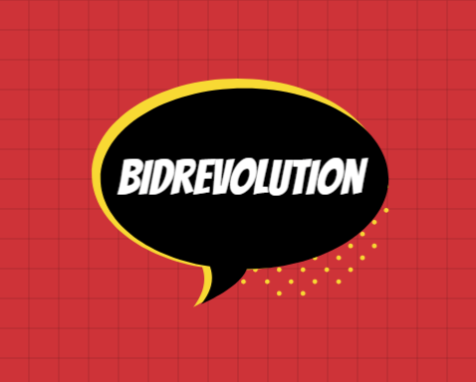Description
Mysterio is a supervillain and enemy of Spider-Man in the Marvel Comics Universe. The original Mysterio (Quentin Beck) was created by Stan Lee and Steve Ditko and first appears in The Amazing Spider-Man #13, although it was later retconned that the aliens seen in The Amazing Spider-Man #2 had been Mysterio and his men in disguise; it was revealed that he had been hired by the Tinkerer to disguise himself as an extraterrestrial and uncover military and industrial secrets.
Debuting in The Amazing Spider-Man #13, Mysterio is Quentin Beck, a special effects wizard and stunt man working for a major Hollywood studio with dreams of making a name for himself in the film industry. However, he came to see his career in special effects as a dead-end job. His attempts to become an actor were poorly received, but he realized that his expertise in illusions could make him an effective supervillain.
In his first battle with Spider-Man, after he frames him for robbing the Midtown Museum, Mysterio obstructs the hero’s spider-sense with gas and dissolves his webbing with a chemical abrasive. However Spider-Man tricked him into revealing he robbed the museum, then revealed he had captured it on tape. Mysterio was then jailed, blaming Spider-Man for his ruined career. He later joins the Sinister Six in an attempt at revenge on Spider-Man, and battles him using robots of the X-Men.
Quentin Beck does not possess superhuman abilities but he is an expert designer of special effects devices and stage illusions, a master hypnotist and magician, and an amateur chemist and roboticist. He had extensive knowledge of hand-to-hand combat techniques learned as a stuntman, allowing him to engage in combat with Spider-Man despite his foe’s superior physical abilities. Mysterio’s suit has personal weaponry which include many devices that aid him in his many agendas. His most striking feature, his helmet, is made of a one way plexiglass material, meaning he can see out but no one can see in. The helmet also includes an air supply to protect him from his own gasses, a Sonar to navigate within his own mist cloak and a holographic projector to aid in 3D illusions that can be used to fool the weak willed. His boots contain magnetic coil springs which allow him impressive leaps as well as the ability to cling to surfaces. His most distinctive and persistent trademark however is his smokescreen cloak. Mysterio’s costume contains nozzles in the boots and wrists that can release a constant stream of smoke, that shields his movements as well as enhancing his mystique. He can mix various other chemicals into this smokescreen for various effects. Such chemicals include; a gas that dulls and inhibits Spider-Man’s spider-sense, a gas that causes paralysis for 30 minutes in those that breathe it in, a chemical abrasive that eats away Spider-Man’s webbing, hypnogens that make those around him more susceptible to his will and hallucinogens to cause vivid hallucinations in those who experience it. A combination of the hypnogens and hallucinogens along with his holographic projectors are how Mysterio achieves most of his illusions. The costume sometimes also includes offensive weaponry, such as lasers or knockout gas nozzles in eye emblems on his shoulders, or electric coils within his cape to electrocute those who touch it. He also employs many different weapons, such as hand-held hypnotic aids or robotic drones, to further his aims in battle.
Stephen J. “Steve” Ditko (born November 2, 1927) is an American comic book artist and writer best known as the artist and co-creator, with Stan Lee, of the Marvel Comics heroes Spider-Man and Doctor Strange.
Ditko studied under Batman artist Jerry Robinson at the Cartoonist and Illustrators School in New York City. He began his professional career in 1953, working in the studio of Joe Simon and Jack Kirby, beginning as an inker and coming under the influence of artist Mort Meskin. During this time, he then began his long association with Charlton Comics, where he did work in the genres of science fiction, horror, and mystery. He also co-created the superhero Captain Atom in 1960.
During the 1950s, Ditko also drew for Atlas Comics, a forerunner of Marvel Comics. He went on to contribute much significant work to Marvel, including co-creating Spider-Man, who would become the company’s flagship character. Additionally, he co-created the supernatural hero Doctor Strange and made important contributions to the Hulk and Iron Man. In 1966, after being the exclusive artist on The Amazing Spider-Man and the “Doctor Strange” feature in Strange Tales, Ditko left Marvel for reasons never specified.
Ditko continued to work for Charlton and also DC Comics, making major contributions, including a revamp of the long-running character Blue Beetle, and creating or co-creating the Question, the Creeper, Shade, the Changing Man, and Hawk and Dove. Ditko also began contributing to small independent publishers, where he created Mr. A, a hero reflecting the influence of Ayn Rand’s philosophy of Objectivism. Since the 1960s, Ditko has declined most interviews, stating that it is his work he offers readers, and not his personality.
Lee and Ditko’s collaboration on the series saw the creation of many of the character’s best known antagonists including Doctor Octopus in issue #3 (July 1963); the Sandman in #4 (Sept. 1963); the Lizard in #6 (Nov. 1963); Electro in #9 (March 1964); and the Green Goblin in #14 (July 1964). Ditko eventually demanded credit for the plotting he was contributing under the Marvel Method. Lee concurred, and starting with #25 (June 1965), Ditko received plot credit for the stories.
Ditko was inducted into the comics industry’s Jack Kirby Hall of Fame in 1990, and into the Will Eisner Award Hall of Fame in 1994.
Near mint condition.
Related products
-


X-Men Poster #36 Mystique Joseph Michael Linsner Dawn
$34.99 Add to cart -
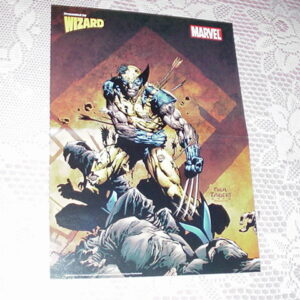
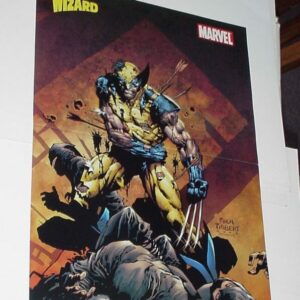
Wolverine Poster #16 vs The Hand The End by David Finch Ninjas
$39.99 Add to cart -
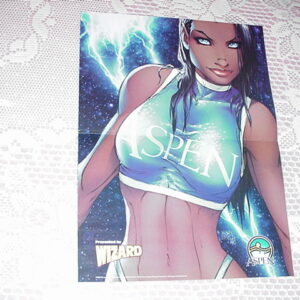
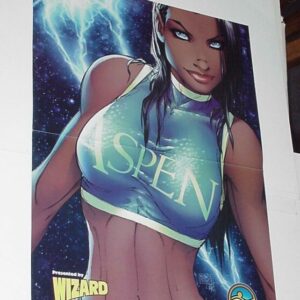
Fathom Poster # 9 Aspen Shirt Michael Turner Matthews Superman
$39.99 Add to cart -
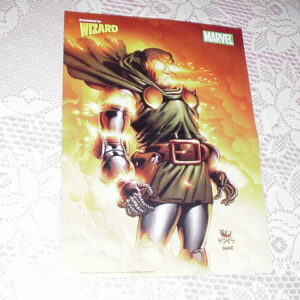
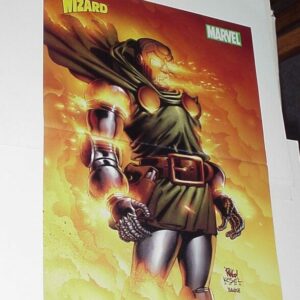
Doctor Doom Poster # 3 Triumphant by Mike Wieringo Fantastic Four 67
$34.99 Add to cart
